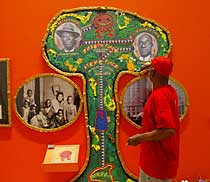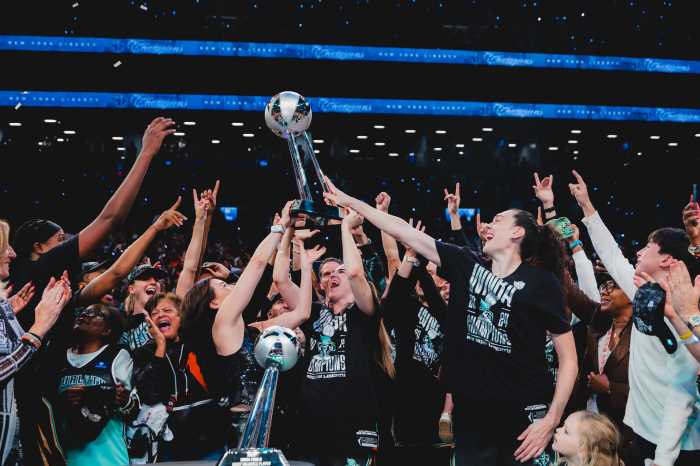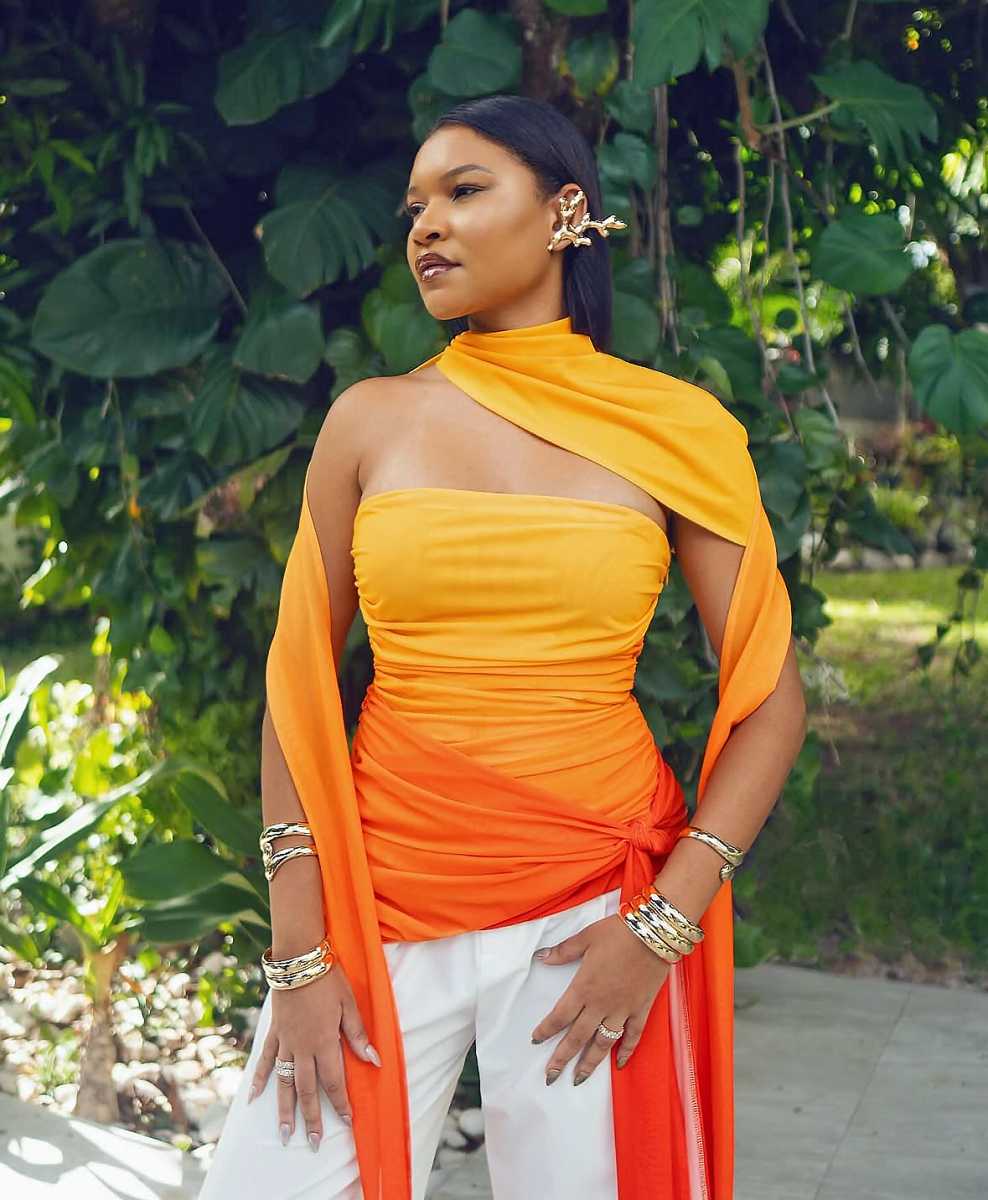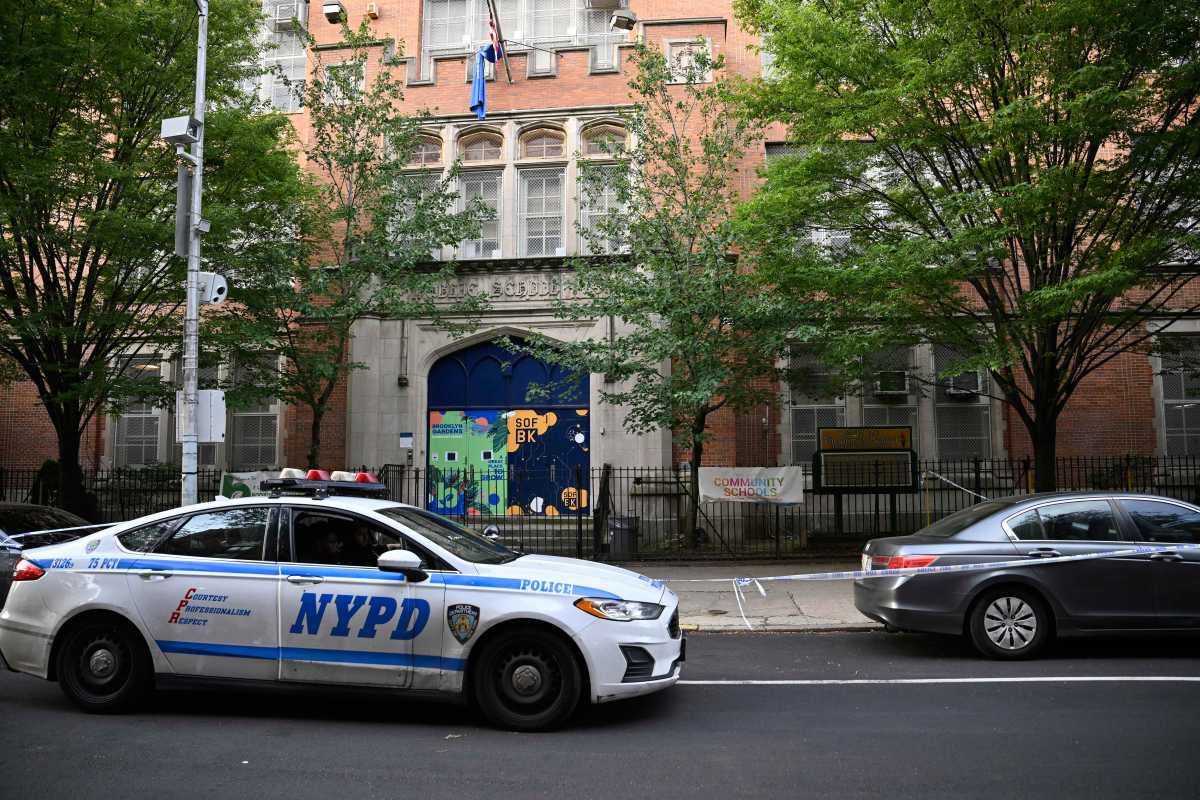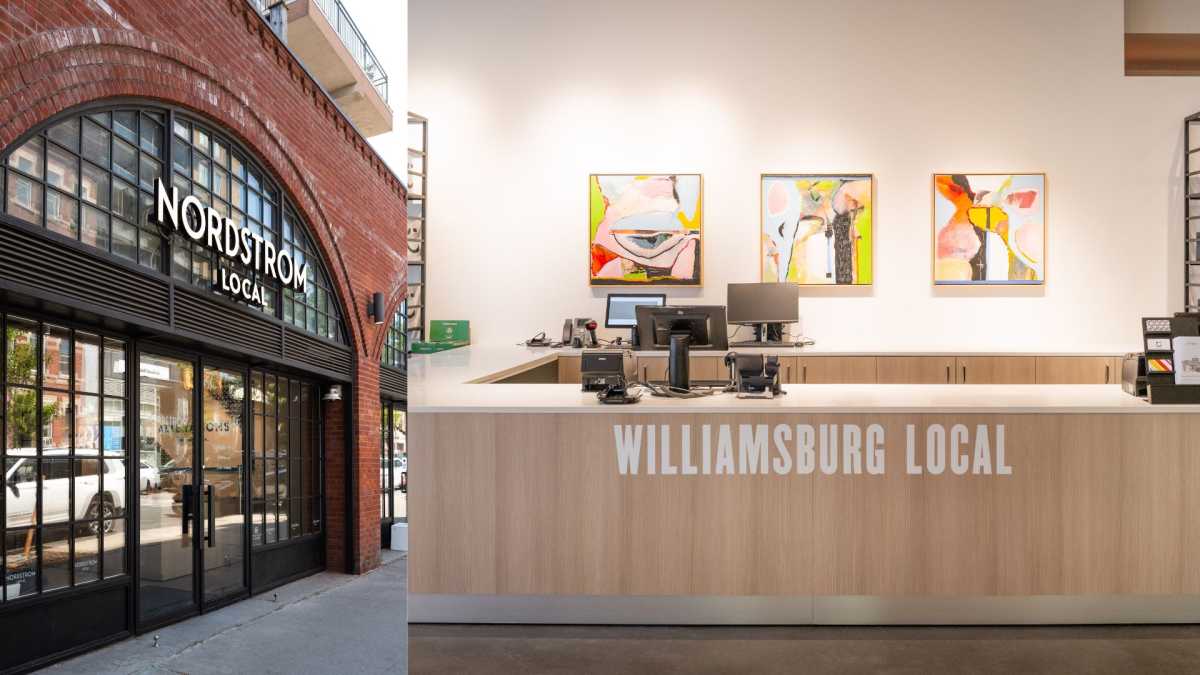The sheer scope of "Open House: Working
in Brooklyn" demands a mentally and physically exhausting
– but spiritually exhilarating – trek across two floors of the
museum (and a scavenger hunt of sorts throughout the rest of
the institution) to see nearly 300 works of art by 198 Brooklyn
artists.
"Open House" is as controversial, and at times, as
confrontational, as "Sensation: Young British Artists from
the Saatchi Collection," which, by the way, curator Charlotta
Kotik also helmed. For evidence of my theory, examine the heap
of mixed materials installed outside, against the backside of
the museum, by Jesse Bercowetz and Matt Bua (one of the many
scattered, satellite installations); or the arrangement of clipped
fingernails by Maria Elena Gonzalez; or John Klima’s children’s-size
helicopter featuring a video game with Osama Bin Laden in its
crosshairs; or an enormous installation of hair and glue by Wenda
Gu running down a stairwell.
All of the artworks were created after 2000, so the exhibit
could easily have been named "Brooklyn NOW!" But the
art isn’t just timely; many are timeless in their appeal and
made the cut after careful consideration by Kotik.
Today, the Brooklyn Museum estimates that there are 5,000 artists
and 50 galleries in this borough. From this large pool, Kotik
culled just a few hundred works by established artists such as
painter Danny Simmons and sculptor Louise Bourgeois as well as
many emerging artists.
While this commitment to the borough’s creative community may
seem unprecedented, the museum has supported local artists throughout
its history. The museum inaugurated the "Working in Brooklyn"
series in 1985, and in the 1930s, the museum actually had a Gallery
for Living Artists. "Open House," however, is the largest
and most ambitious showcase of Brooklyn artists yet.
It would be impossible to look at this show and make generalizations
about what Brooklyn’s contemporary artists have in common aesthetically.
If anything, the sheer volume of artwork only serves to demonstrate
the diversity of perspectives. In "Open House" there
are natives of Asia, Africa, South America, Europe and even Jersey
City.
Remember me
But for this viewer, it was often the contributions exploring
African-American heritage and identity that had a visceral impact.
Williamsburg artist Lorenzo Pace offers an intimate look into
his own family’s history with his multimedia work, "Jalani
and the Lock Family History Tree" (2004), which tells the
story of his inheritance of a padlock that once chained his enslaved
great great grandfather. Against a backdrop of electric orange,
Pace has painted a family tree and mounted photos of his family,
and the lock itself, in gilt frames.
His illustrated book about how this troubling piece of metal
came to his family is displayed within a child’s reach. The base
of the artwork is a white picket fence – a symbol of the American
dream that was not to be for the men and women brought here in
chains – behind which are strewn artificial flowers and toys.
The colors and the book are meant to lure youngsters, Pace told
GO Brooklyn, so that this chapter of America’s history will not
be forgotten.
His installation also displays a model of the granite
sculpture he designed for "Triumph of the Human Spirit (1992-2000),"
a monument installed at the African Burial Ground, in Lower Manhattan.
Kambui Olujimi’s "Something Like a Phenemonon" (2002)
also brings past and present together in his black-on-white digital
collage. In the lower left of the composition, a familiar, small
figure leaps to put a basketball through a hoop. In stark contrast,
a silhouetted noose hangs down in the upper right corner.
Olujimi’s work is a reminder that lynchings are not events from
America’s distant past, even if those events seem inconceivable
today when black athletes have achieved superstardom and riches.
The tiny athlete in this picture suggests that Olujimi believes
this is just the beginning of African-American recognition in
this country.
Dr. Tracey Rico’s quilts, "Mammy’s Cakewalk" (2002)
and "Bamboozled" (2002) stitch together articles of
clothing, fabric swatches and photographs. Like quilts embellished
with symbols that were used as maps to enable refugees on the
Underground Railroad to find the next safehouse, these textiles
convey somber, complex examples of racism and oppression with
their illustrations. Rico’s blankets are the stuff of nightmares.
Revealing vulnerability
There were many works that hinted of the fragile, delicate nature
of young life. Bryan Crockett’s "Pride" (2001), which
appears to be two naked mole rats reaching towards each other,
is masterfully carved from pink, cultured marble. "Pride"
demonstrates so much expertly executed realism that these sweet
creatures, although made of marble, appear to have vulnerable,
thin, translucent skin.
Katy Grannan’s intimate photograph, "Angie and Betty, Shoeneck
Creek, Nazareth, Pennsylvania" (2003), shows a wet, semi-nude
woman standing on a riverbed, clutching her soggy clothes and
staring into the distance. Her muscular dog looks up at her expectantly,
perhaps wondering, as we do, if she’s a modern-day Venus coming
out of the water, or a cold, uncomfortable woman in need of a
towel and a cup of tea?
Melanie Baker’s enormous portrait "George" (2002)
creates an aged visage of a certain leader of the free world
from collaged newspaper and charcoal. From the bridge of his
nose on down, Baker’s moody, looming technical achievement depicts
deep lines in his face underscoring a determined intensity. The
inevitable erosion of time and age on the face of this man could
easily be the mask of grim determination any of us take on when
boarding a subway in a new world filled with unpredictable dangers.
And that is just a brief introduction to our neighbors whose
work is on display in "Open House." It is such an ambitious
exhibition, in fact, that I’ll be returning to visit this "House"
many more times before it closes in August.
"Open House: Working in Brooklyn,"
opens April 17 and continues through Aug. 15 at the Brooklyn
Museum, 200 Eastern Parkway at Washington Avenue in Prospect
Heights. The full-color catalogue for the exhibit (Brooklyn Museum
Press, 2004), featuring artists’ biographies, is available at
the museum gift shop. Museum admission is free on April 17, from
11 am to 11 pm, and on April 18, from 11 am to 6 pm. For more
information about the "Open!" weekend of festivities,
visit the museum’s Web site at www.brooklynmuseum.org
or call (718) 638-5000.


